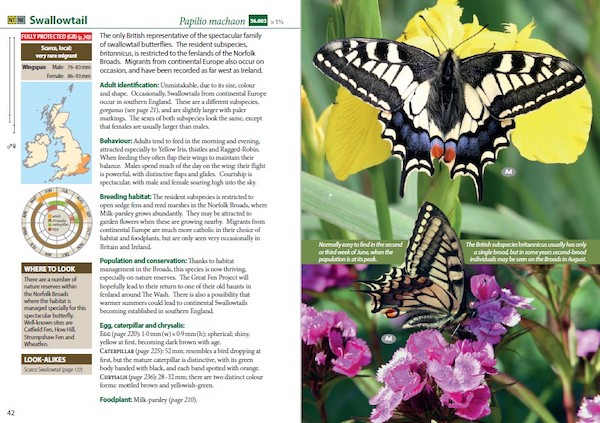 |
by David Newland, Robert Still, Andy Swash and David Tomlinson
'Britain's Butterflies' is a comprehensive and beautifully designed photographic field guide to the butterflies of Britain and Ireland. Containing hundreds of stunning colour photographs, this extensively revised and updated new edition provides the latest information on every species ever recorded. It covers in detail the identification of all 59 butterfly species that breed regularly, as well as four former breeders, 10 rare migrants and one species of unknown status. The easy-to-use format will enable butterfly watchers - beginners or experts - to identify any species they encounter.
This is the fourth edition of Britain's Butterflies - a Field Guide to the Butterflies of Great Britain and Ireland, whose third edition was reviewed in 2015 and whose second edition was reviewed in 2010.
 |
This edition is similar in appearance to its predecessor - why change a successful format? Each species description typically includes images of both sexes of the adult butterfly (including forms and common aberrations), distribution, phenology (the timing of life cycle stages through the year), with an accompanying description that includes tips on where to look for the species, 'look-alike' species, adult identification, behaviour, breeding habitat, population and conservation, immature stages and larval foodplants.
 |
Despite these similarities with previous editions, there are some improvements in this new edition. The book now acknowledges the species listing given in Checklist of the Lepidoptera of the British Isles by D.J.L. Agassiz, S.D. Beavan and R.J. Heckford - the definitive checklist of the butterfly and moth fauna of the British Isles. However, the taxonomic order is not strictly adhered to, with species grouped into 'types' (such as 'Fritillaries') instead - presumably to make identification of butterflies found in the field much easier. As one would expect, distribution maps are up to date, and there are revised sections on recording and monitoring, and conservation and legislation, and there is a new section on climate change.
 |
 |
All in all, I still consider this to be the best photographic field guide available, and highly recommend it.